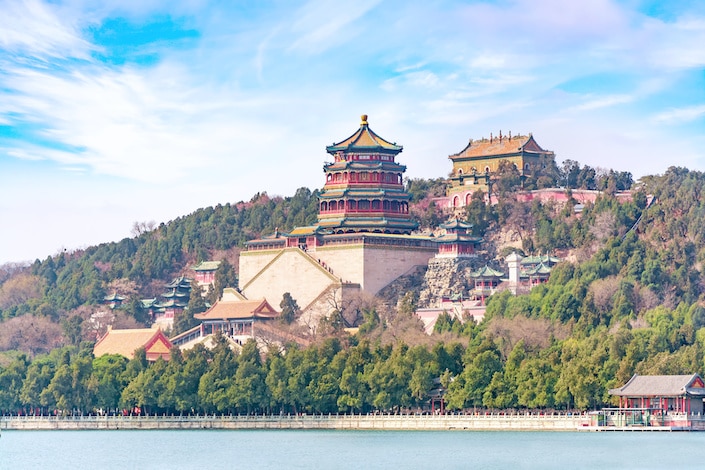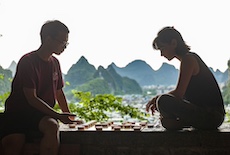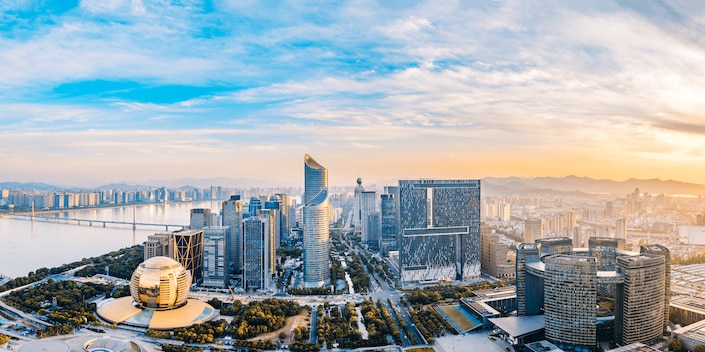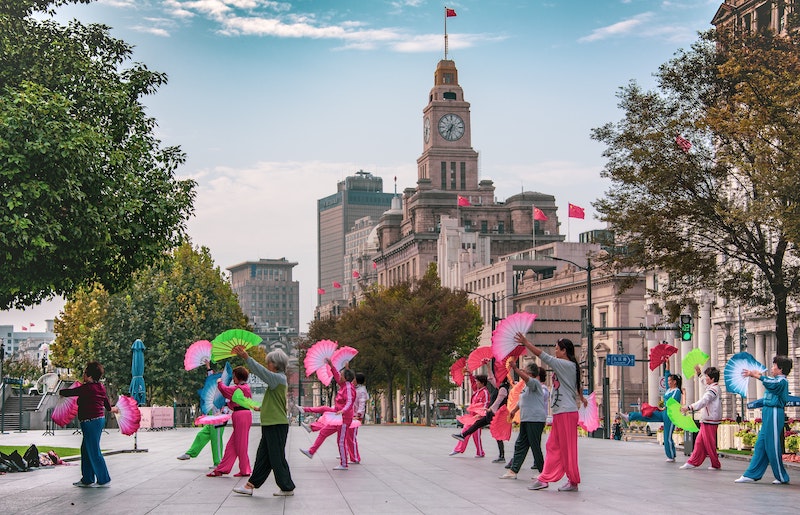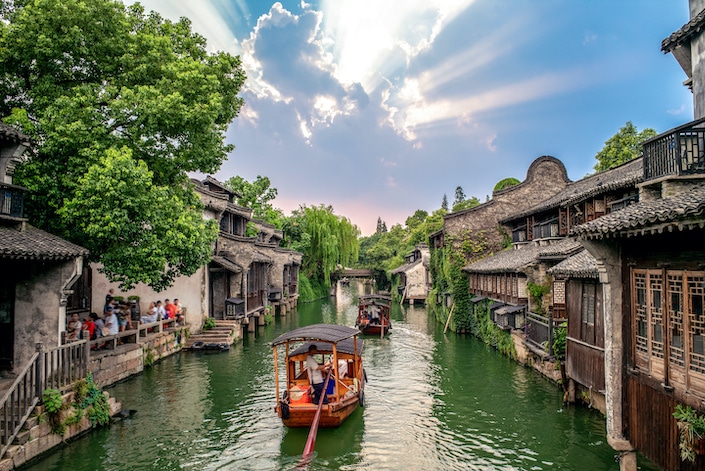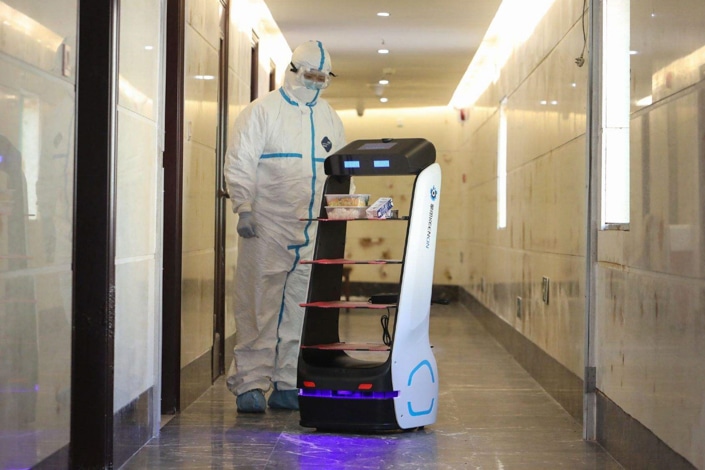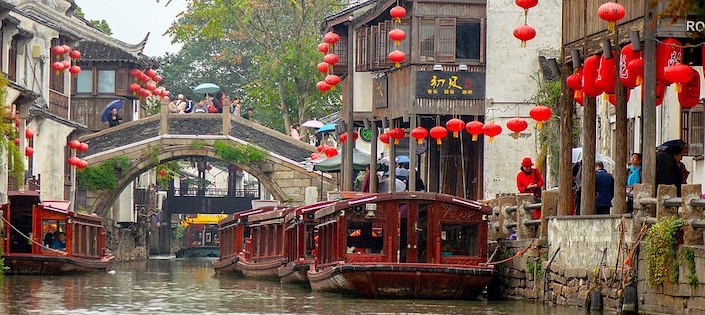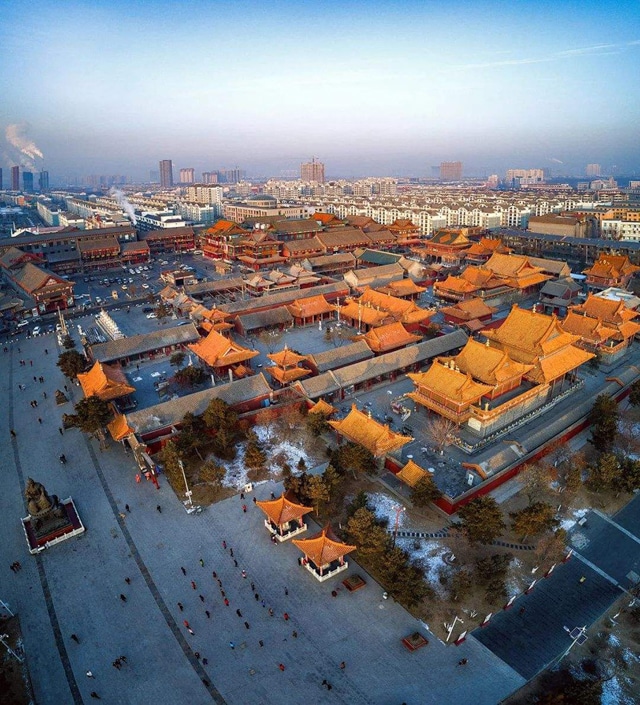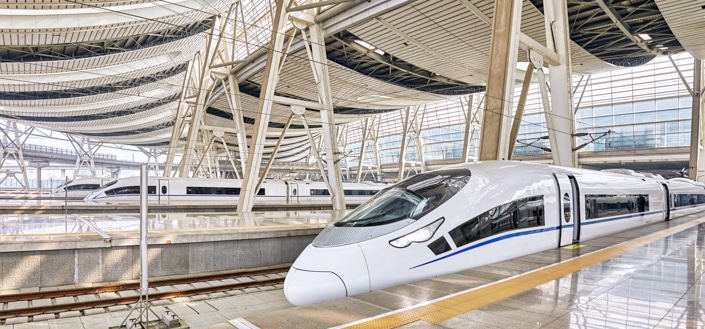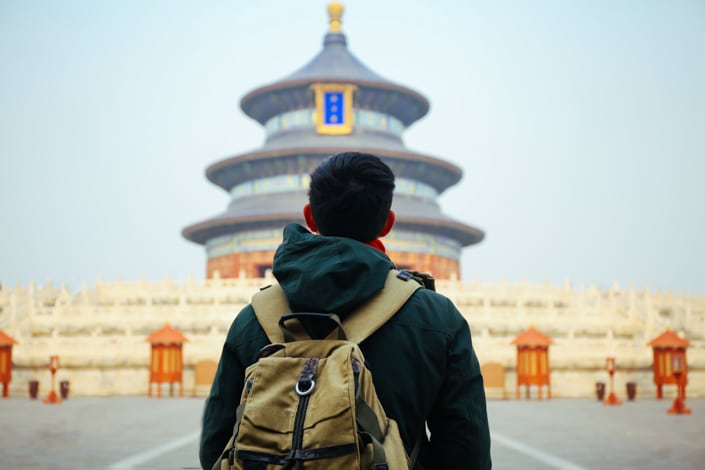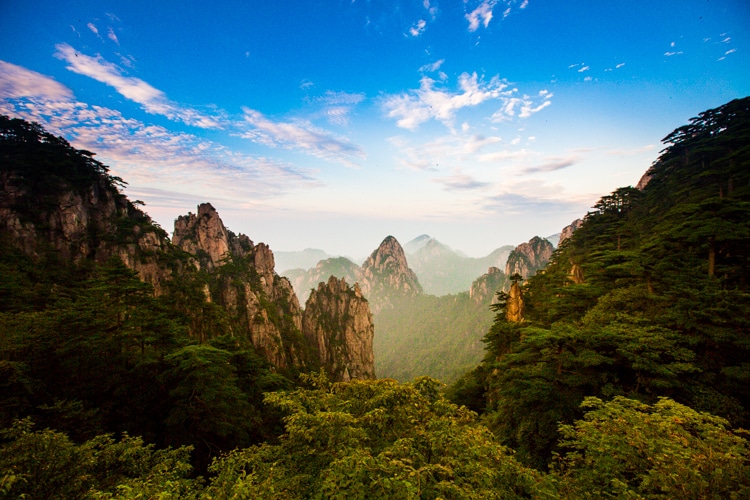Beijing Summer Palace: The Essential Travel Guide
Learn Chinese in China or on Zoom and gain fluency in Chinese!
Join CLI and learn Chinese with your personal team of Mandarin teachers online or in person at the CLI Center in Guilin, China.
Beijing. When most people think of this city, they immediately think of the Forbidden City or Tiananmen Square. While these places are certainly worth your time, your trip won’t be complete unless you also visit the slightly less well-known Summer Palace.
This grand collection of stunningly beautiful gardens and pavilions is the most well-preserved imperial garden in China.
Table of Contents
History of the Summer Palace, old and new
The Summer Palace (颐和园 or Yíhéyuán in pinyin) that exists today was built in the 1880’s, near the end of the Qing dynasty (1636-1912 CE). Although it’s called a “palace,” it’s actually a gigantic garden. A UNESCO World Heritage site, it’s considered the world’s finest example of a Chinese imperial garden.
What many people don’t realize when visiting the Summer Palace today is that this grand and awe-inspiring garden is in fact but a shadow of its former self. Indeed, the original Summer Palace, completed in 1764, was destroyed by British and French forces in 1860.
This historical episode, while forgotten by much of the world, continues to live in infamy in China today and is considered a symbol of China’s humiliation at the hands of Western powers.
If you really want to get the most out of your visit to today’s Summer Palace, we recommend that you also visit the nearby ruins of the old Summer Palace.

The original Summer Palace was destroyed in 1860.
The old Summer Palace
The history of the Summer Palace stretches back almost 1,000 years to the Jin dynasty (1115–1234 CE), when grand gardens and palaces first began to be constructed just northwest of present-day Beijing. In the Yuan dynasty, an artificial lake that would later become Kunming Lake was constructed in the area. Soon, various temples and gardens sprung up around the lake.
Around 1750 CE, the Qianlong Emperor decided to celebrate his mother’s 60th birthday by building the old Summer Palace near the area occupied by Kunming Lake. First, he expanded the lake and built up the neighboring Longevity Hill.
He then supervised the construction of a truly magnificent collection of architectural marvels, many of which were replicas of various attractions from different parts of China.
Although most buildings were constructed in Chinese style, there were also a small number of Western-style buildings and fountains designed by the Jesuit missionary Giuseppe Castiglione. These buildings, called the Western Mansions (西洋楼 or Xīyánglóu), were built in a distinctive Italian baroque style.
After construction of the entire 800 acre old Summer Palace complex was completed, it was adopted as the principal imperial residence of the Qing emperors. The Forbidden City itself was mostly used for formal ceremonies.

Before its destruction, the Qing emperors spent most of their time living in the old Summer Palace.
Destruction of the old Summer Palace
In 1860, during the Second Opium War, British envoys arrived in Beijing to negotiate what they hoped would be the surrender of the Qing government. Instead, they were arrested and many members of the delegation were tortured to death. In retaliation, Lord Elgin, the British High Commissioner, ordered British troops to burn the Summer Palace to the ground.
The complex was so large that it took 3,500 soldiers to set it alight. In the end, it burned for three days. British and French troops had already started looting when the order came to burn it down, and these troops carried off countless priceless treasures, many of which remain in Europe today.

The Italian baroque style sections of the old Summer Palace known as the Western Mansion were largely destroyed by British and French troops.
The looted property included 12 bronze animal heads representing the 12 animals of the Chinese zodiac that were originally part of the old palace’s Zodiac Fountain. A British soldier also carried off a Pekinese dog, which he presented to Queen Victoria and which was subsequently named “Looty.”
The destruction was almost complete, but there were still a few scattered buildings left standing. These remaining structures were further damaged during the Boxer Rebellion and the Cultural Revolution.
The memory of the palace’s destruction remains painful in China even today, and whether or not the looted artifacts should be repatriated to China is a point of international controversy.
Construction of the new Summer Palace
In the 1880’s, Empress Cixi ordered the construction of a new Summer Palace in honor of her 60th birthday. In a controversial move, she built it using funds intended for upgrading the navy. The new palace wasn’t as large as the original one, and many of the ruins of the nearby former palace remained untouched.
In 1900, this new palace was destroyed once again, this time by Eight-Nation Alliance forces. Repairs were completed by 1903, at which time Cixi began staying there from April to October every year. Today’s Summer Palace is essentially the same one that was completed in 1903.
What to see and do
Despite the fact that the current Summer Palace is much smaller than the original, it’s still quite large. The garden is dotted with numerous small temples, pavilions and bridges and is so big that you could easily spend an entire day (or two!) exploring it.
To prevent yourself from getting overwhelmed and missing some key sights, it’s best to have an idea of what you want to see before visiting.
Be sure not to miss these highlights:
The Long Corridor
Said to be the longest covered painted walkway in the world, the Long Corridor (长廊 or Chángláng) was originally built around 1750 by the Emperor Qianlong. It was intended to provide his mother with a place to view the garden’s scenery without being exposed to the elements.
Destroyed in 1860, the current version was rebuilt by Empress Cixi. The beams are decorated with over 14,000 exquisite paintings featuring landscapes, scenes from traditional Chinese operas and various historical and legendary figures.

The Long Corridor is the longest walkway of its kind in the world.
The Marble Boat
At the end of the Long Corridor on the shore of Kunming Lake is the Marble Boat (石舫 or Shífǎng). The original boat was constructed in 1755. Its upper decks were made of wood painted to look like stone but this wooden part was destroyed in 1860. Empress Cixi had the upper decks rebuilt in European style and added two paddle wheels to the sides.
The boat may originally have been built in answer to the Chinese idiom 水能载舟, 亦能覆舟 (shuǐnéngzàizhōu, yìnéngfùzhōu). Taken literally, this idiom means that water can both carry and sink a boat. Taken figuratively, however, it means that the people can either support or overthrow their rulers.
By building a stone boat, the rulers of the Qing Dynasty were declaring their belief in the eternal stability of their rule.

The Marble Boat in Kunming Lake was built to symbolize the eternal stability of the Qing dynasty.
The Seventeen-Arch Bridge
The Seventeen-Arch Bridge (十七孔桥 or Shíqīkǒngqiáo) connects the shore of Kunming Lake with Nanhu Island. It’s the palace’s largest bridge and was built in 1750 as part of the original garden.
The bridge is decorated with over 500 unique stone lions. 17 arches were used so that no matter which side one starts counting from, the ninth arch will always be in the middle. This was done because the number nine was considered powerful and auspicious by the Qing emperors.

The ninth arch in the middle of the Seventeen-Arch Bridge was meant to highlight the power of the Qing emperors, who considered nine a lucky number.
The Bronze Ox and Kunming Lake
Near the Seventeen-Arch Bridge is a large Bronze Ox (铜牛 or Tóngniú). Cast in 1755, the ox was placed next to Kunming Lake following a tradition which credits oxen with flood control powers.
Kunming Lake (昆明湖 or Kūnmínghú) is an artificial lake modeled after Hangzhou’s fabled West Lake which serves as the garden’s centerpiece. Boat rides on the lake provide especially impressive views of Longevity Hill.

In traditional Chinese culture, oxen were thought to have the power to control floods.
The Hall of Benevolence and Longevity
The Hall of Benevolence and Longevity (仁寿殿 or Rénshòudiàn) was used as a throne room by the Guangxu Emperor and Empress Cixi during their stays at the Summer Palace. Inside the hall is a throne decorated with nine dragons and flanked with peacock feather fans.
The Hall of Happiness and Longevity
Facing Kunming Lake is Empress Cixi’s private residence, the Hall of Happiness and Longevity (乐寿堂 or Lèshòutáng). Inside is a long table that Cixi used for meals, during which she was typically served 128 different dishes. The chandeliers in the hall are notable for having been the first electric lights in China.

Visiting the Summer Palace is a great way to learn about the everyday lives of important Qing dynasty historical figures like Empress Cixi.
The Garden of Virtue and Harmony and the Grand Theater
The Garden of Virtue and Harmony (德和园 or Déhéyuán) is actually a collection of four courtyards with various buildings scattered throughout. The most important building is the Grand Theater (大戏楼 or Dàxìlóu), located in the second courtyard.
This three-story stage was used to perform Peking Opera, which Cixi enjoyed. Near the stage is another hall, known as the “make-up room.” This room is now a museum containing various Peking Opera-related exhibits as well as a Mercedes-Benz said to be the first car ever imported to China.
The Tower of Buddhist Incense
The Tower of Buddhist Incense (佛香阁 or Fóxiānggé) is a large octagonal structure built on the side of Longevity Hall. It serves as one of the most recognizable symbols of the Summer Palace.

The Tower of Buddhist Incense towers over Kunming Lake.
Suzhou Street
Suzhou Street (苏州街 or Sūzhōujiē) was one of the original features of the old Summer Palace before its destruction in 1860. The street was built to imitate the shopping streets of Suzhou. When the emperor visited, eunuchs and maids used to dress up as shopkeepers so that he and his entourage could pretend to go shopping there.
Suzhou Street was one part of the old palace that wasn’t rebuilt by Empress Cixi. The street that exists today was rebuilt only recently, in 1991. It features a mix of old style shops, restaurants and teahouses.
The Ruins of the Old Summer Palace
The ruins of the old Summer Palace (圆明园 or Yuánmíngyuán) are located about 5 kilometers west of the new one. The ruins of the Western Mansions and the fountains are especially popular with visitors.
There’s also a labyrinth which remains largely intact. For those interested in getting a better sense of the scale of the destruction, the exhibition hall contains a model of the old Summer Palace as it once was.
Note that the ruins are considered a separate attraction and require a separate entrance ticket.

The ruins of the old Summer Palace are not to be missed. Photo Credit: 颐园新居
Best times to visit
Visiting the Summer Palace requires spending a lot of time outdoors, so your experience will vary depending on the weather and the seasons. Most visitors prefer to come in the Spring, but each season offers a unique experience.
- Spring (April-May): Peak visiting season. Expect pleasant weather. You’ll see flowers blooming throughout the park but also lots of crowds, so try visiting in the morning to beat the rush.
- Summer (July-August): Weather will be hot, with July temperatures averaging 88 degrees Fahrenheit (31 degrees Celsius). You’ll see lotus blossoms blooming in parts of Kunming Lake. Come in the morning when it’s cooler and less crowded.
- Fall (September-October): Weather is agreeable but there won’t be any flowers.
- Winter (November-March): Low season with very few tourists. Expect bitter cold temperatures averaging 36 degrees Fahrenheit (2 degrees Celsius) in January. The Summer Palace is stunning during and after snowstorms. Kunming Lake becomes an ice rink in January, so consider going skating if you visit then.

Spring and fall are the best seasons for visiting the Summer Palace.
Getting there
Getting to the Summer Palace is very convenient thanks to Beijing’s extensive metro system.
Getting to the new Summer Palace
There are several entrance gates that you can use to access the Summer Palace. We recommend that you enter through the North Palace Gate (北宫门 or Běigōngmén), which is the most easily accessible by metro.
To get there, take metro line 4 to Beigongmen Station (北宫门站 or Běigōngménzhàn). Use Exit D to leave the station and walk west for about 3 minutes to the North Palace Gate.
It’s also possible to get to the palace by taxi or by bus, but these methods aren’t recommended. Buses are slow and confusing and taxis are expensive and likely to get stuck in traffic.
Getting to the ruins of the old Summer Palace
Subway is also the best way to reach the old palace ruins. Take metro line 4 to Yuanmingyuan Station (圆明园站 or Yuánmíngyuánzhàn). Use Exit B to leave the station and enter the ruins through the palace’s south gate.
A window into China’s imperial past
When planning a trip to Beijing, a visit to the Summer Palace should be near the top of your list of things to do. Exploring this stunning imperial garden is a great way to better understand Chinese history and culture, all while soaking up some spectacular natural scenery.
If you were blown away by the imperial gardens of the Summer Palace, you're also likely to enjoy a trip to Suzhou. Easily accessible from Shanghai, this ancient city is known for its many small, private classical Chinese gardens which provide an interesting contrast to the grandeur of the Summer Palace.

The Summer Palace is one of the most beautiful and educational places to visit not just in Beijing, but in all of China. Photo Credit: Peter Burian

Anne Meredith holds an MA in International Politics and Chinese Studies from the Johns Hopkins School of Advanced International Studies (SAIS). As part of the graduation requirements for the program, Anne wrote and defended a 70-page Master's thesis entirely in 汉字 (hànzì; Chinese characters). Anne lives in Shanghai, China and is fluent in Chinese.


